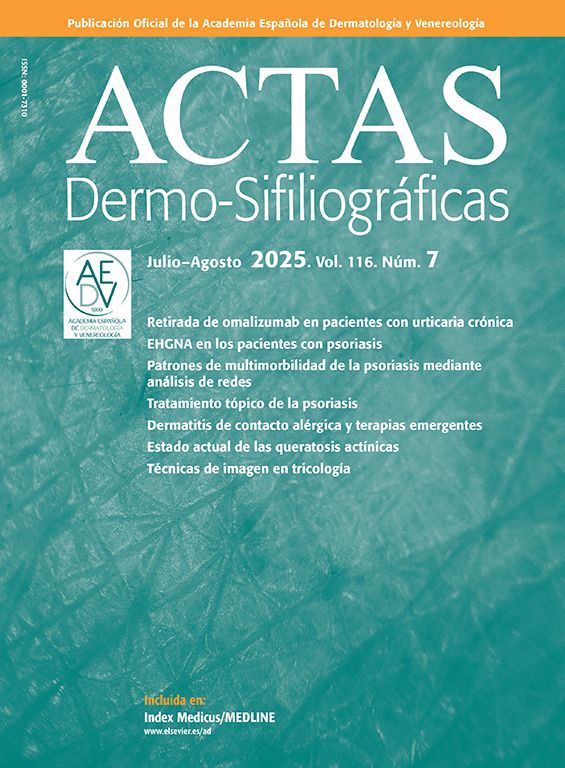An 86-year-old woman was referred to an outpatient dermatology clinic for a subcutaneous tumor located on the vertex that had grown progressively over the preceding 8 years. Except for occasional bleeding after trauma, the lesion had been completely asymptomatic. Clinical examination revealed a subcutaneous, multilobulated, partially ulcerated tumor of 9cm×8cm in the occipital region of the scalp (Fig. 1A). Examination of the skin and mucosa revealed no alterations. No locoregional adenopathy was detected on palpation. Computed tomography (CT) of the scalp and neck showed no infiltration of the surrounding subcutaneous tissue or bone involvement. The histologic examination was compatible with a proliferating trichilemmal tumor of the scalp (Fig. 1B). Trichilemmal tumors or pilar cysts are considered cutaneous adnexal tumors that originate in the outer hair root sheath. Histology reveals the absence of a granular layer between the spinous and horny layers. Although it is considered a benign entity, it can sometimes give rise to a proliferating trichilemmal tumor, which in elderly patients must be distinguished from squamous cell carcinoma. Due to its capacity for local invasion, the first line of treatment is complete and wide surgical excision with safety margins.
The Impact Factor measures the average number of citations received in a particular year by papers published in the journal during the two preceding years.
© Clarivate Analytics, Journal Citation Reports 2025
SRJ is a prestige metric based on the idea that not all citations are the same. SJR uses a similar algorithm as the Google page rank; it provides a quantitative and qualitative measure of the journal's impact.
See moreSNIP measures contextual citation impact by wighting citations based on the total number of citations in a subject field.
See more





